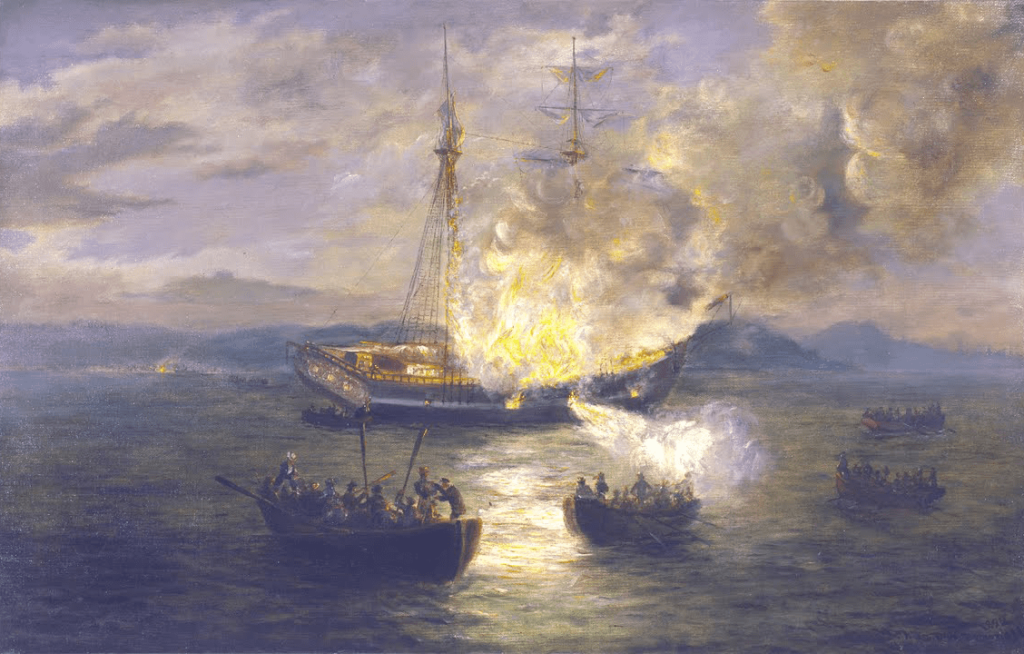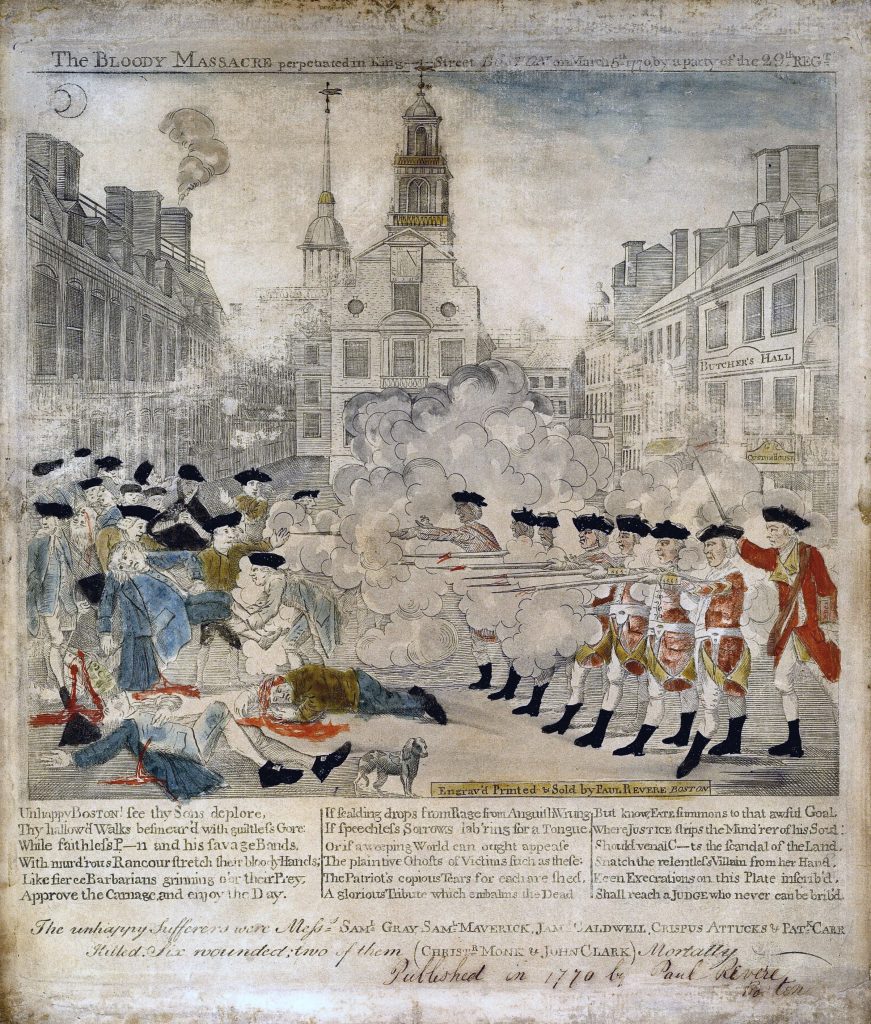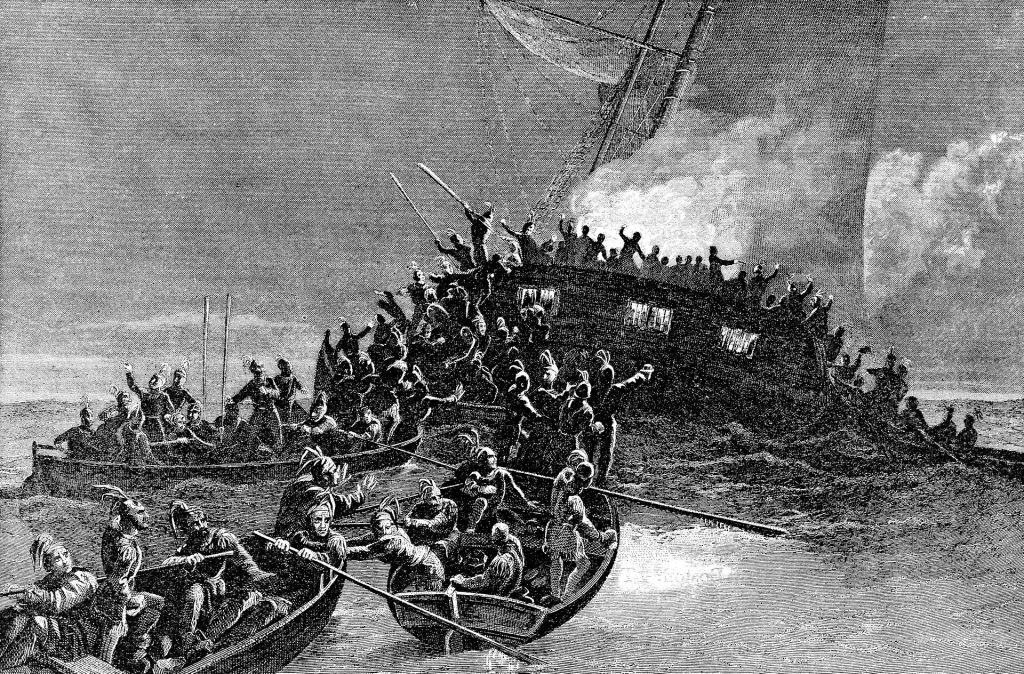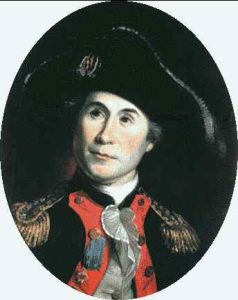Contents
Contents
The Burning of the Gaspee, also known as the Gaspee Affair, was an act of colonial resistance against British customs officials. The incident occurred off the coast of Warwick, Rhode Island, on the night of June 9 and morning of June 10, 1772.
In this article, we’ve provided a summary of the incident, and explained what occurred in the aftermath.
Summary

Historical context
After the end of the French and Indian War in 1763, the British government was in a significant amount of debt.
To raise revenue, they decided to implement new laws in the Thirteen Colonies of America, including the Sugar Act (1764), Stamp Act (1765), and the Townshend Acts (1767-68).
The Townshend Acts in particular gave British customs officials greater powers to search colonial ships, and seize illegal shipments. Those accused of smuggling could be tried in a vice-admiralty court by a judge, instead of by a colonial jury, increasing the chances of a conviction.
The British also decided to begin enforcing the Navigation Acts more strictly, making it more difficult to smuggle goods into or out of the Thirteen Colonies. And under the new laws the British implemented, new taxes were placed on colonial consumers and merchants.
The colonists were outraged – they believed that under British common law, the government had no right to tax the colonies without their consent, and without offering representation in parliament.
Resistance efforts were also centered around customs officials, because the new shipping regulations greatly impacted the profitability of colonial merchants.
In 1770, a group of British soldiers guarding the Boston Custom House were surrounded by an angry mob of about 300 people, who threw projectiles and hurled abuse at the redcoats.
Eventually, the British panicked and opened fire, killing five colonial civilians.

This incident, which came to be known as the Boston Massacre in America, led to a significant increase in resistance efforts against British authority.
The Burning of the Gaspee
The HMS Gaspee was a Royal Navy customs enforcement schooner (a type of large sailing boat), commanded by Lieutenant William Dudingston.
The vessel was responsible for intercepting and searching colonial merchant ships suspected of smuggling in the waters around Rhode Island.
Lieutenant Dudingston was despised by colonial sailors and merchants. The Gaspee had a reputation for being heavy-handed, including stopping and searching boats when it didn’t need to, often delaying legitimate shipments that had already passed customs inspection.
On the night of June 9, 1772, the Gaspee was chasing the Hannah, a smaller merchant ship, to try and stop and search the vessel.
The captain of the Hannah, Benjamin Lindsey, led the Gaspee into the shallow waters of Namquid Point, causing the British ship to get beached on a sandbank.
Dudingston decided to wait onboard the ship for high tide, when he would be able to sail away. However, upon arriving in Providence, Lindsey let John Brown, a leading Patriot merchant, know about the grounding of the ship.
John Brown, along with a Patriot sailor named Abraham Whipple, gathered a group of about 50 men. The group armed themselves, boarded boats, and set off towards the Gaspee.
They arrived in the early hours of June 10. With the Gaspee still stuck, the men boarded the ship, facing little resistance from the crew, who they forced off the vessel. Lieutenant Dudingston was shot in the groin, but his injuries were not life-threatening.
The Patriots then set the ship on fire, completely destroying it above the waterline.
Aftermath and effects
Up to 1772, the British were generally relatively lenient towards acts of resistance against customs enforcement.
The British did not want to escalate tension if they could avoid it, especially after the Boston Massacre. As a result, they sometimes turned a blind eye, even to property damage and other similar acts of protest.
By contrast, the burning of the Gaspee was taken very seriously, given the value of the ship, and the brazenness of the attack.
The British immediately opened a Royal Commission into the incident, and charged a number of those accused of boarding the ship with treason. Those accused would have been tried in England, and if found guilty, they would have likely faced the death penalty.
However, the Royal Commission was unable to find sufficient evidence against the men to warrant sending them across the Atlantic. Most local witnesses were unwilling to help the British, likely because they supported the cause of Whipple, Brown, and their men.
Eventually, the charges were dropped, and no one ever faced punishment for the destruction of the ship.
Surprisingly, this incident did not immediately lead to a significant increase in tension between the Patriot and Loyalist sides, and did not lead to direct retaliation from the British.
It would take the implementation of the Tea Act (1773) and the Boston Tea Party later that year for conflict to significantly escalate. The destruction of British tea shipments in Boston caused the British parliament to pass the Intolerable Acts (1774) in retribution, eventually leading to the American Revolution.
Lieutenant Dudingston was court-martialed over the incident, but was found to bear no responsibility for what occurred. He was promoted to Captain, but suffered from ill health in the years after, limiting his active service.
Namquid Point, where the burning of the Gaspee occurred, is now known as Gaspee Point.




